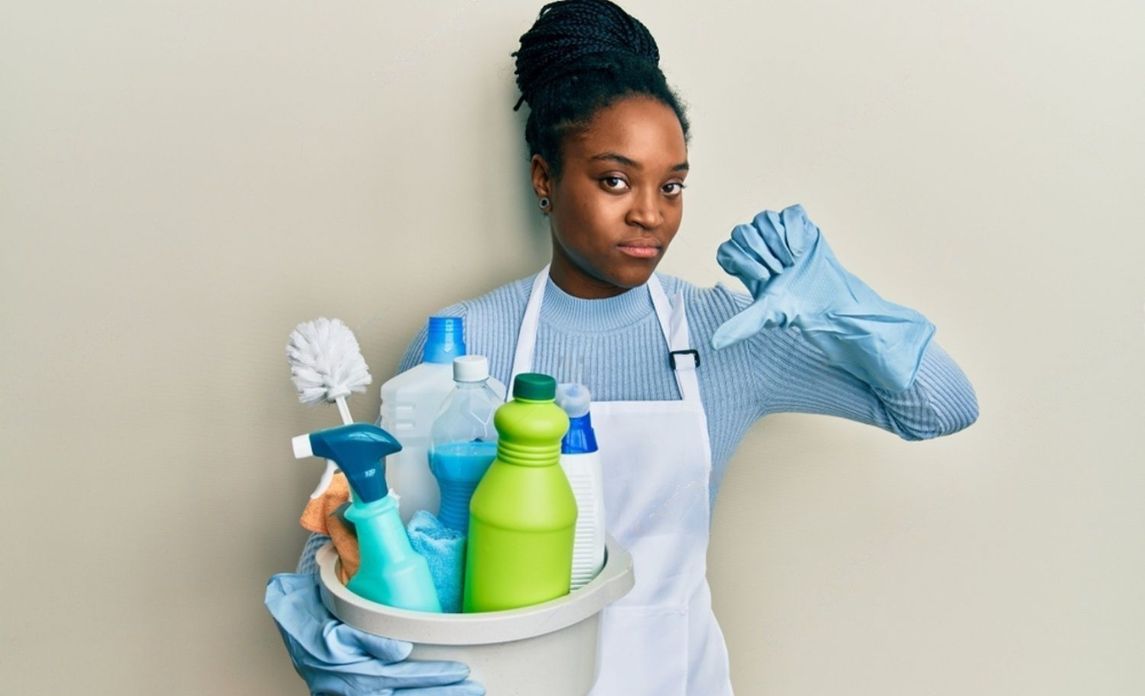Everyone wants a clean space to live and work in, but the honest to goodness truth is that not everyone likes to clean. That’s why many of us look for tips and tricks to make the task a little easier and more efficient.
Sadly, it’s highly likely that you’ve encountered cleaning techniques that are actually more of urban legends. They may sound good on paper but are actually ineffectual or, worse, even do more bad than good.
Here are some of these so-called cleaning techniques that you must avoid:
Using Too Much Product
Some people assume that using more of a cleaning product, whether it’s soap, detergent, or bleach, will make it more effective. However, this logic doesn’t actually work and would probably make your trusted commercial cleaners cry when they find out you’ve been doing this.
When you use too much of a product, it makes it more difficult to wash it off. This wastes not just the product itself, but also water and energy. In addition, you may end up not doing a good job of rinsing. This will leave a residue on objects and surfaces and trap dirt; over time, this results in dullness and faded colours.
For better results, follow the instructions on the product labels and use the recommended amount. In fact, you can usually do with slightly less. The only time you need to use more of a cleaning product (especially soap and detergent) is if you live in an area where the water supply is high in mineral content.
Microwaving Your Dish Sponge
Your dish sponge can be an unpleasant breeding ground for bacteria, simply because it’s always damp. It’s definitely a horrifying thought of spreading around germs on your eating and cooking utensils, which is probably why some people still microwave their dish sponges.
The truth is that yes, microwaves can kill harmful microbes. However, a research paper has revealed that microwaving a sponge still doesn’t eliminate all bacteria. There were, in fact, still traces of pathogens that can cause food-borne diseases.
The best thing to do is simply not use your dish sponge for other purposes. Make sure to disinfect after use and replace it every week or so.
Rubbing Toothpaste on Silver
If you have silverware or silver jewellery, you’ve probably heard about the cleaning technique of using toothpaste. Specifically, using toothpaste to polish silver and make it gleam like new.
Here’s the deal: this method works! However, you might not realise it but toothpaste is actually quite abrasive. This is perfectly fine for human teeth. For delicate silver? Not so much. Of course, one or two instances won’t immediately cause irreparable damage. That said, it’s best to limit the use of toothpaste for cleaning your precious silver and definitely avoid it for your most valuable ones.
Cleaning Everything With Vinegar
The acidic nature of vinegar makes it an ideal natural cleaner for a wide variety of things, from greasy stove tops to smelly microwave ovens. It can even be used to temporarily unclog drains. However, the same acidity that makes vinegar a powerful cleaner also makes it harmful for surfaces like granite, marble, and wood. Vinegar is also not ideal for anything iron, so keep it away from your cast iron pans.
Bleaching Rust Away
Like vinegar, bleach can be used for a number of cleaning and disinfecting tasks. The one thing it’s not good for? Rust. This is because of bleach’s oxidising properties. On the other hand, this is where vinegar’s acidity can come in handy. Simply mix some white vinegar and salt into a paste to lighten the rust stain and make it easier to wash off.
Pouring Soda in the Toilet
Some time ago, soda was vilified to be so acidic that it can be used to clean toilet bowls. There’s a tiny bit of truth in that statement, which is that soda is acidic. However, its low pH isn’t nearly enough to be used as an alternative to bleach for getting rid of grime and stains. What’s more, dark-coloured soda may actually darken light-coloured porcelain over time.
Another reason you shouldn’t be pouring soda into your toilet bowl is that it contains lots of sugar. Over time, it can accumulate and attract bacteria.
Polishing Wood Surfaces Often
Last but certainly not least, there are some people who believe that wood surfaces need to be polished often. At first glance, this might seem logical to protect the surface of the wood and make it gleam. However, frequent polishing can lead to a wax build up. This can make hardwood floors and furniture look dull, which is opposite of your goal.
For better results, clean wooden surfaces by regular dusting using a microfibre cloth. Give it a good polish every 2 to 4 months; the interval can go even longer depending on certain conditions such as foot traffic and sun exposure.
A place’s cleanliness can affect the health and safety of its occupants. Thus, you need to take the job seriously. Don’t just believe any too-good-to-be-true cleaning tips. Rather, stick to tested methods or else consult professional cleaners so you don’t end up inadvertently causing damage to your home or office.


